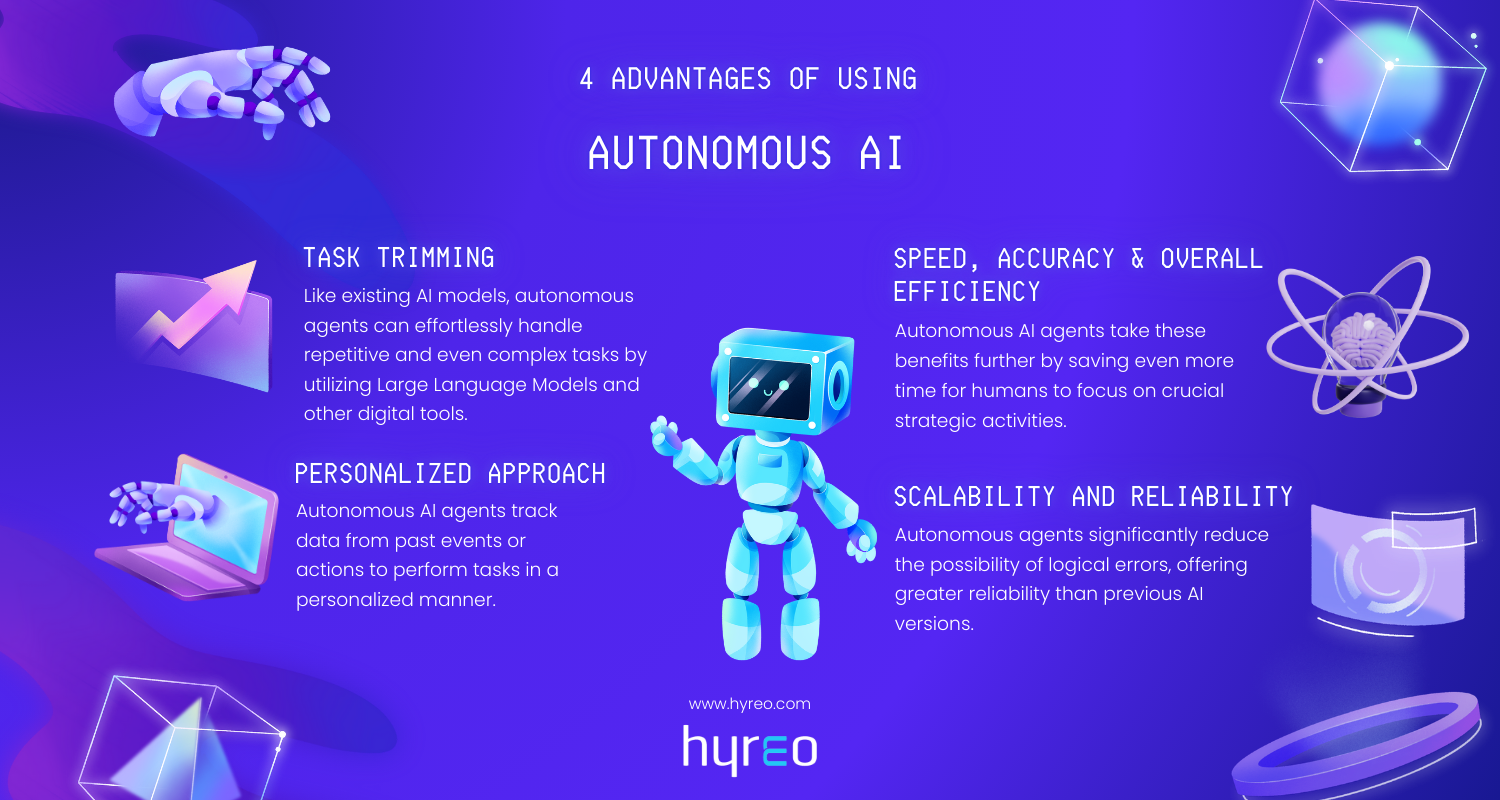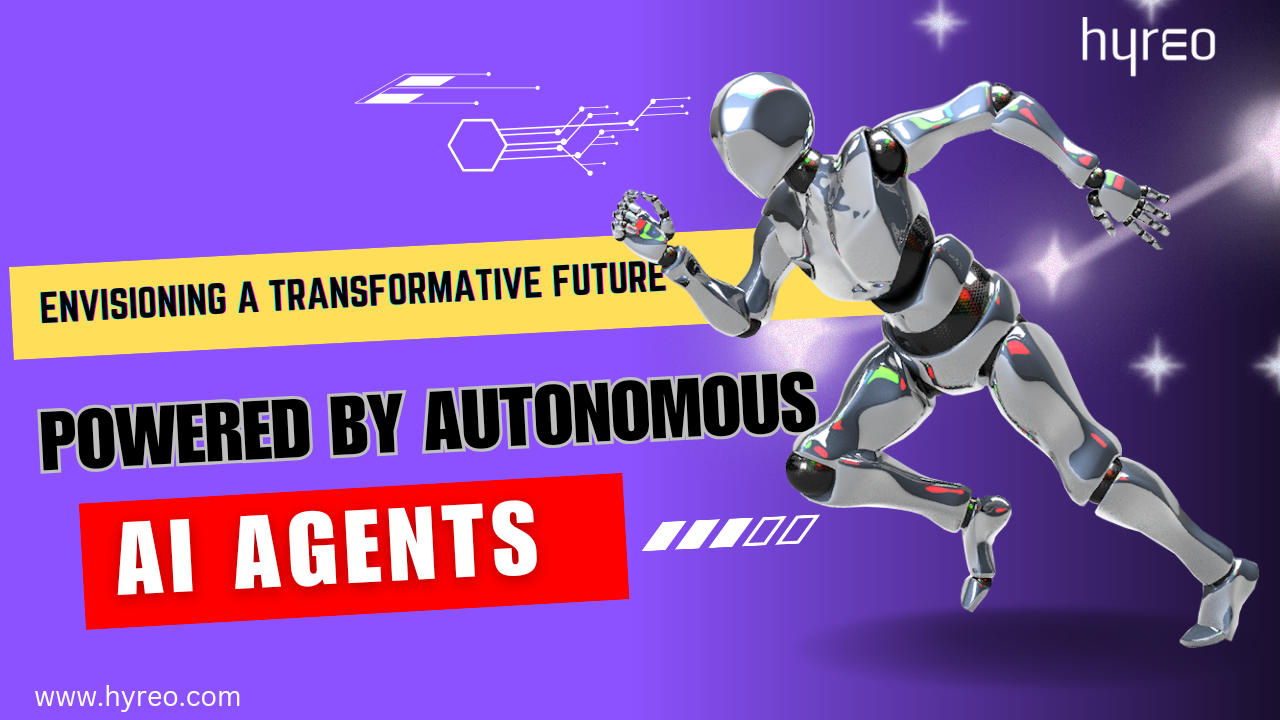Just when the world seems to have steadied itself from the groundbreaking innovations brought about by Artificial Intelligence (AI), the next chapter is already up and running, urging another spin of transformations. Autonomous AI agents have become a paradigm shift in such a short time with their remarkable ability to perform tasks completely on their own.
In recent years, we’ve seen how ChatGPT and similar Generative AI platforms have transformed the way we access information, work, and even plan our daily activities. AI has seeped into our professional and personal lives in one way or another and has now become an integral aspect we can’t live without. However, with autonomous agents, we can surpass all the limitations that persist with the existing Gen AI platforms, which may automate a substantial amount of workload yet require human assistance for the initial prompts. These agents strive to attain a smooth and naturality that solely exists in the human dimension.
One of the foundational contributions to the development of autonomous agents was the Google Brain paper, which introduced the concept of ‘chain-of-thought prompting.’ This breakthrough demonstrated the ability of Large Language Models (LLMs) to deconstruct complex problems and systematically work through each step to reach a final solution. This innovation, indirectly, paved the way for the creation of autonomous agents built upon LLMs.
According to Research Nester, the market size for Autonomous AI and Autonomous agents is projected to grow from USD 40 billion in 2023 to USD 508 billion by 2036. This represents an impressive compound annual growth rate (CAGR) of 36% from 2024 to 2036.
What separates Autonomous AI agents from Standard AI?
The major difference between autonomous AI systems and traditional AI systems is based on the level of dependency they have on humans for decision-making. While standard AI follows strict rules or prompts given by humans, autonomous agents operate without such action orders as they can make decisions based on what they learn from their surroundings, experience, and goals. Time makes them smart, and they learn to adapt and decide on what to do in unfamiliar scenarios, making them an asset to our tech-oriented future.
How do Autonomous AI agents work?
Autonomous agents are designed to perform a series of tasks independently, utilizing tools such as LLMs, external APIs, and external resources like websites and databases. They leverage memory—previous learnings and experiences—to execute contextually relevant tasks. Their process begins once they receive an objective. By continuously gathering information from their environment, these agents identify patterns, similarities, and potential risks, allowing them to make informed decisions and achieve specific goals without direct human intervention. Autonomous agents can operate across various environments, including physical (robots), digital (software), and hybrid settings. More importantly, they can understand, process, and communicate in human language.
Key Characteristics of Autonomous Agents
# Autonomy
As their name suggests, autonomous AI agents are designed to perform tasks independently, without human intervention. Much like a child learning and growing through experience, these agents adapt, analyze patterns, learn over time, and make decisions autonomously.
# Proactive and Reactive
Autonomous systems are inherently dynamic, capable of predicting unexpected or undesirable outcomes and taking proactive measures to address potential problems in advance. Similarly, autonomous AI agents can detect even the slightest changes in their environment and respond in real time to scenarios that require immediate action.
# Natural and Engaging
Autonomous AI agents hold the promise of more engaging and human-like interactions, enhancing tech-human transactions and conversations across various futuristic settings. This advancement ensures smoother and more natural interactions, bridging the gap between technology and human users.
Advantages of Autonomous AI Agents

# Automation of redundant activities
Like existing AI models, autonomous agents can effortlessly handle repetitive and even complex tasks by utilizing Large Language Models and other digital tools. The key advantage is that, unlike standard AI, they do not require human prompts for every action. This autonomy significantly reduces human effort and saves time.
# Personalized Approach
Autonomous AI agents track data from past events or actions to perform tasks in a personalized manner. By understanding context from previous experiences, they can engage in meaningful interactions even in novel settings, delivering tailored and adaptive responses.
# Speed, Accuracy & Overall Efficiency
Standard AI offers significant advantages such as processing vast amounts of data in seconds, providing accurate outcomes, and operating around the clock. Autonomous AI agents take these benefits further by saving even more time for humans to focus on crucial strategic activities. This enhanced efficiency boosts productivity and reduces labor costs, making it indispensable for meeting evolving market trends and needs.
# Scalability and Reliability
Business expansions traditionally required more resources, but the advent of AI has changed that dynamic. Now, with autonomous agents handling complex tasks at scale, expanding operations is no longer a challenge. Their precision makes them essential for future agendas and evolving needs. Autonomous agents significantly reduce the possibility of logical errors, offering greater reliability than previous AI versions. While earlier AI systems often required human oversight, these advanced agents can seamlessly perceive their environment, plan actions based on learned experiences, and execute tasks independently.
Types of Autonomous AI Agents and their use cases
Depending on the environment where they function and the tasks they undertake, we can classify autonomous AI agents into three categories– Robotic, Digital, and Hybrid Agents.
# Robotic Agents
These agents thrive in the physical environment in the form of machines or devices designed to perform real-world activities autonomously. They use in-built sensors, processors, and actuators to interact with their surroundings, gather data, make real-time analyses, and perform tasks accordingly.
Use cases: In manufacturing, industrial robotic agents are used for packaging, assembling, managing inventory, and performing quality control. The logistics industry uses such agents to streamline warehouse operations and manage supply chains. In healthcare, these agents assist in surgeries, medication delivery, and physical tasks such as moving patients from one place to another.
# Digital Agents
As in the name, digital agents are software-based entities that operate in virtual environments. These agents have complex workflows and generate digital responses using various algorithms, data, and digital tools. Digital agents are integrated using APIs, and they can perform various tasks across multiple industries.
Use cases: The chatbot used for customer service, and user interactions is a good example for digital agents. In finance, these agents come as virtual assistants automating trading strategies and detecting fraudulent activities. Digital agents are also used for content generation and data analysis.
# Hybrid Agents
Hybrid agents are designed to operate in both physical and digital environments that demand interactions with physical and virtual elements. They have sensors as well as digital processing capabilities to perform tasks emerging from both domains.
Use Cases: In the automobile industry, autonomous hybrid agents operate vehicles on physical roads, guided by sophisticated digital algorithms. Similarly, hybrid agents power smart home systems and wearable health monitoring devices, enhancing functionality and user experience across various applications.
Hyreo: Venturing into the spectrum of Autonomy
As an AI-powered recruiter co-pilot with smart automation and virtual interaction capabilities, Hyreo has reimagined the hiring routine for talent acquisition and HR leaders by introducing Gen AI functionalities into the platform.
Conversational AI chatbot: Our AI chatbot is an all-rounder virtual assistant for effective talent acquisition and recruitment featured by superior candidate journeys for pipeline candidates. From initiating interactions with applicants to delivering top-notch onboarding support, our chatbot effortlessly meets the criteria for a great candidate experience. Here’s what makes Hyreo chatbot, an integral asset to your talent acquisition requirements.
- 24/7 engaging interactions
- Prescreening & assessment
- Interview scheduling
- Ticket management
- Post-offer engagement
- Onboarding Support
Explore other blogs to learn more:
Top reasons to implement chatbots in recruitment
How to Choose the Right Chatbot and its Benefits
Top 10 Ways in which HR chatbots have transformed the HR department
Conclusion
Autonomous AI agents promise a bright future across all industries, offering advancements in contextual awareness, extreme efficiency, strong adaptive functionalities, and human-like discretion. Gartner predicts that Gen-AI-driven human interactions will evolve from users prompting large language models (LLMs) to users interfacing directly with autonomous, intent-driven agents. This shift promises higher autonomy and better alignment with user goals.
As these agents continue to evolve, we can anticipate even greater developments in their capabilities, enabling them to perform increasingly complex tasks with no human input at all. The future of autonomous AI agents holds the potential for transformative impacts, driving innovation, and enhancing productivity across various sectors.
FAQs
- Which are the top Autonomous AI agents in 2024?
The top autonomous AI agents include AutoGPT, Play AI, Jarvis, BabyAgi, Devin AI, and AgentGPT.
- How can I integrate autonomous AI agents into my software?
Autonomous agents can be integrated using versatile APIs. APIs created by OpenAI and Microsoft facilitate easy integration without disruptions.
- Are AI agent solutions expensive?
The expenses of adopting autonomous agents may vary depending on the complexity of the task. However, once integrated, these agents cut short expenses that usually go to employees, recruitment, or third-party services.



